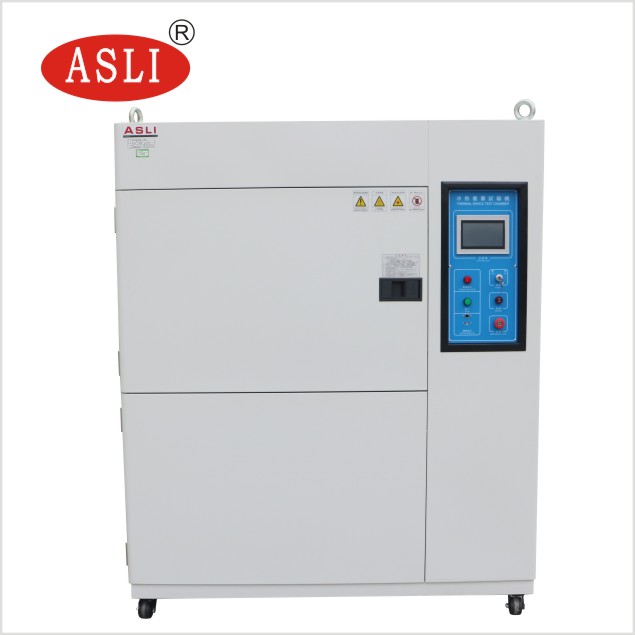In the realm of product testing, thermal chamber testing stands as a critical process to ensure the durability and functionality of components under extreme temperatures. "Thermal Chamber Testing Procedure: A Comprehensive Guide by ASLI Testing Equipment" meticulously details the operational protocols necessary for executing these tests with precision. From calibrating equipment to interpreting the data gathered during the testing phases, the guide acts as an indispensable manual for practitioners in the field. As industries increasingly demand materials capable of enduring harsh environmental conditions, the insights offered in this guide become more pertinent. One might wonder, how does the guide address the evolving complexities of thermal testing in modern applications?
Thermal chamber testing is a critical process that assesses a product's endurance under extreme temperature variations. This testing method exposes products to both high and low temperature environments within a controlled setting to evaluate thermal stability and product durability.
Utilizing sophisticated equipment such as thermal shock chambers and temperature humidity test chambers, this process simulates the different harsh conditions that a product might encounter throughout its lifecycle.
The primary objective here is to identify material weaknesses and ensure that the product can withstand sudden changes in temperature without compromising its functionality or integrity. An insulated testing space within the chamber allows for precise temperature control, making it possible to rigorously test products according to specific standards and requirements.
Through this method, manufacturers can predict how their products will perform in extreme weather conditions or during sudden temperature shifts, thus ensuring reliability and safety for end users.



Having outlined the fundamental concept of thermal chamber testing, we now examine the specific types of tests commonly employed to evaluate product robustness under thermal stress.
Thermal cycling and burn-in testing are two primary methods used to ascertain the durability and operational reliability of components under varying thermal conditions.
Thermal cycling involves controlled alternations between extreme temperatures at a rate that minimizes thermal stress while ensuring all parts achieve and withstand specified temperatures. This test includes soak periods at each temperature extreme to guarantee uniform thermal exposure.
Adjusting the speed of these temperature transitions is crucial; while faster ramp rates can enhance production efficiency, they must be carefully managed to prevent damage due to excessive thermal stress.
Burn-in testing, in contrast, typically involves maintaining a component at a high temperature for an extended period. This method tests the component's performance and stability in a thermally demanding environment, simulating prolonged operational conditions.
It is essential for identifying early failures and ensuring long-term reliability of electronic devices.
Both testing types are integral in a comprehensive thermal testing strategy, providing valuable insights into product robustness and lifespan under various thermal scenarios.
Related Article: Rapid-rate Thermal Cycle Test Chambers: Revolutionizing Temperature Testing Solutions
A thermal shock chamber is crucial for assessing the resilience of products under severe temperature variations, and its design incorporates several essential components. These components are integral to ensuring a controlled and effective testing environment where thermal shock conditions can be accurately simulated.
Here are the key components:
Understanding these components is essential for anyone looking to utilize a thermal shock chamber to its fullest potential, ensuring high precision in stress testing products under extreme conditions.
To conduct effective thermal testing, a variety of specialized tools are essential. Temperature chambers, meticulously engineered to simulate varying environmental conditions, provide the foundational setting for such testing.
Temperature chambers are essential for simulating extreme environmental conditions, allowing precise control over heating and cooling cycles. They help manufacturers assess a product's durability and functionality under temperature variations. ASLI Testing Equipment provides advanced chambers with programmable settings to meet industry-specific testing standards and ensure accurate results.
Thermocouples and thermistors are temperature sensors used to monitor and measure heat fluctuations during testing. Thermocouples offer a broad temperature range, while thermistors provide high sensitivity for minor variations. These tools ensure precise data collection, helping engineers evaluate a product's thermal response and performance under controlled test conditions.
Heat spreaders distribute thermal energy evenly across a test sample, preventing localized overheating or cold spots. They are commonly used in electronic component testing to ensure uniform temperature exposure. Proper heat distribution helps identify material weaknesses and enhances the accuracy of thermal chamber testing procedures.
Liquid baths provide stable and uniform temperature control, making them ideal for calibrating sensors and testing small components. These baths use precise temperature regulation to ensure accurate thermal readings. ASLI’s liquid baths maintain consistent thermal conditions, enabling reliable material property analysis in industries such as electronics and pharmaceuticals.
Infrared thermography uses thermal imaging cameras to detect temperature variations without physical contact. This non-invasive technique identifies hotspots, potential failures, and thermal inconsistencies in products. It is widely used in electronics, automotive, and aerospace industries to assess thermal behavior and improve product design and reliability.
Thermal probes are inserted into materials or components to measure internal temperature fluctuations. They provide real-time data on heat transfer and material responses to environmental conditions. These tools help engineers analyze product behavior under thermal stress, ensuring compliance with safety and performance standards.
Control and data acquisition systems automate thermal testing, recording temperature changes and performance metrics in real time. These systems enhance test accuracy, streamline data collection, and enable precise analysis of product behavior under thermal conditions. ASLI’s advanced monitoring systems support high-efficiency testing in research and industrial applications.
Together, these tools form a comprehensive toolkit for conducting thorough and controlled thermal tests. Proper use of these instruments ensures reliability and accuracy in the testing process, empowering engineers and researchers to derive meaningful insights from their thermal experiments.
Begin thermal chamber testing by meticulously preparing your samples, ensuring they are clean, dry, and correctly oriented according to the test specifications. This initial step is crucial for acquiring accurate data that reflects the thermal stability of the material under investigation.
Follow this step-by-step guide to ensure precision and control throughout the testing process:
Each step is critical for a controlled and effective thermal analysis, guiding design improvements and material selections.
Thermal chamber testing can indeed simulate high-altitude conditions, effectively controlling for environmental factors such as temperature and pressure, providing accurate altitude simulation for rigorous testing of materials and components in controlled laboratory settings.
Thermal chambers require certifications adhering to specific standards, ensuring testing compliance with international safety and performance regulations. These certifications are crucial for operational integrity and control in various testing environments.
The duration of a typical thermal test cycle can vary widely, painting a picture of cycle variability. Test durations hinge on specific protocols, often ranging from hours to several days, tailored to precise regulatory or developmental objectives.
Yes, specific safety protocols for operating a thermal chamber include using appropriate safety equipment and ensuring all operators receive comprehensive operational training to maintain control and prevent accidents during testing procedures.
Energy consumption rates for thermal chambers vary based on size, design, and operational settings. Optimizing energy efficiency involves understanding power consumption patterns and implementing control mechanisms to reduce unnecessary energy use during testing.
In conclusion, the "Thermal Chamber Testing Procedure: A Comprehensive Guide by ASLI Testing Equipment" provides a foundational framework for conducting precise thermal tests. It emphasizes the importance of meticulous setup, accurate calibration, and detailed programming of temperature conditions. By adhering to these guidelines, researchers can ensure robust data collection, thus enabling a thorough assessment of material resilience under thermal stress. Ultimately, this guide facilitates the enhancement of product reliability and quality in response to extreme thermal environments.
Founded in 1988, ASLI (China) Test Equipment Co., Ltd. produces high-quality inspection instruments and testing equipment, including temperature and humidity chambers, aging testers, and vibration testers. Certified to international standards, ASLI serves research, quality inspection, and educational sectors worldwide, renowned for precision, reliability, and exceptional customer service.
Contact us for a free quote of your ideal Thermal Shock Test Chamber!
Related Article: Thermal Shock Test Chambers: The Ultimate Tool for Extreme Temperature Testing


[…] growing customization of test chambers meets specific industrial needs, promoting innovation and sustainability in thermal testing […]